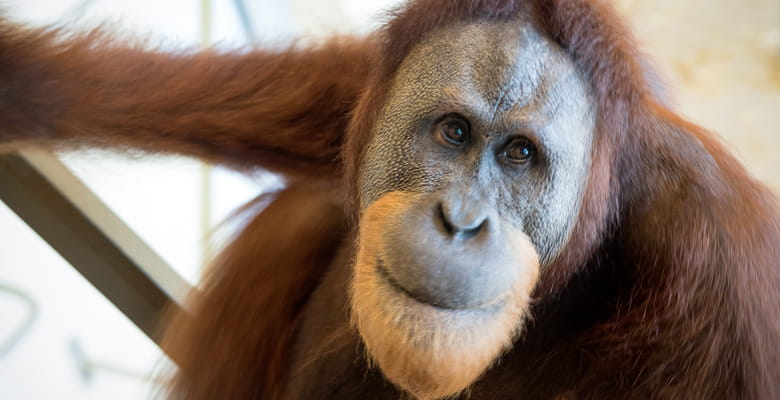Human speech evolved from great apes

Researchers have shown that, contrary to previous arguments, great apes do have control over their voice, and can learn how to ‘speak,’ throwing new light on the evolution of speech.
How spoken language evolved from the vocal communication system of an ancestral great ape is unclear. It has been argued that spoken language could not have stemmed from archaic vocalisations produced by human ancestors because spoken language is fundamentally learned, and great apes – our closest relatives – cannot learn to produce new vocalisations. Instead, it was thought that great ape vocalisations were entirely arousal-driven, over which individuals have no control.
In addition, it was argued that control over the voice was far from reach for great apes, which would otherwise give them the capacity to learn vowel-like calls.
However, researchers from LJMU, Durham University, the Pongo Foundation (Netherlands) and the Max Planck Institute, among others, reveal in a new study published in Scientific Reports that a captive orangutan, named Rocky, has learned to produce a novel vocalisation that has never been heard from any other orangutan.
They show this by analysing the largest database available on orangutan calls, collected over 12,000 observation hours of 120 individuals across 15 wild and captive populations. This implies that the individual must have exerted fine and precise voice control, bestowing him the capacity to learn a new vocalisation – to ‘speak’.
To demonstrate this, the researchers presented the individual with an imitation ‘Do-as-I-do’ game. Whenever a human raised or lowered the tone/pitch of her voice, the orangutan did so too. This proves that orangutans have the potential capacity to control the action of their voice in real-time and in a ‘conversational’ context - participating in a turn-taking exchange of utterances with a social partner.
Moreover, this flexibility proved to be much more accurate than expected, with the orangutan imitating changes in the human voice down to a few tens of hertz.
Professor Serge Wich of LJMU, one of the authors of the study, commented: “Our findings indicate that the excellent voice control that humans exhibit likely derives from an evolutionary ancestor with similar capacities in terms of voice control as those found in orangutans, and possibly in all great apes more generally. Based on these findings, science can now reconstruct the vocal capacities of an early hominid, estimated to have lived before the split between the orangutan and the human lineages, and examine the following steps in the evolution of the vocal system towards full-blown speech.”
Dr Adriano Lameira, lead author of the report, added: “This study is in line with a growing number of studies demonstrating that the vocal communication system and aptitude of great apes is well beyond what it has been traditionally conceded to our closest relatives. Many claims about the 'poor' vocal capacities of great apes derive from a time when in fact very little was known about their natural communication features and characteristics. Recently, our team has been able to show that great apes can learn new consonant-like calls. This new study puts in place the next piece of the puzzle of speech evolution by demonstrating that an orangutan can also learn a new vowel-like call and tune his voice with excellent voluntary control. If a great ape ancestor of both the orangutan and human lineages had the capacity to learn consonant-like and vowel-like calls, it was probably only a matter of time until the first syllable or word emerged".
The paper entitled ‘Vocal fold control beyond the species-specific repertoire in an orang-utan’ is published in Scientific Reports.
It has received extensive media coverage, including on the BBC and MyScience.
